All economic analysis of the effects of the Trans-Pacific Partnership (TPP) shows it would have contributed positively to U.S. economic growth and job creation. These gains have now been foregone, write Joshua Meltzer and Mireya Solís. This piece originally appeared in The Hill.
As one of his first official acts, President Trump signed an executive order removing the U.S. from the Trans-Pacific Partnership (TPP) and moving to renegotiate the North American Free Trade Agreement (NAFTA). The TPP is the 12-nation trade deal that included the United States, Japan, Mexico, Canada, Australia, New Zealand, Vietnam, Peru, Chile, Malaysia, Singapore, and Brunei. The negotiations for TPP commenced under President George W. Bush and were concluded under President Obama. All economic analysis of the effects of the TPP show it would have contributed positively to U.S. economic growth and job creation. These gains have now been foregone.
Leaving the TPP also undercuts U.S. leverage with China. While China was not a party to the agreement, the TPP had led to a fierce debate in China about prospects for joining it, as well as the type of economic reform it needs. That reform incentive, which could have led China to become a fairer player in the global market, has vanished.

The TPP also includes rules that seemed to matter to Trump, such as disciplining government support for state-owned enterprises and enhancing transparency measures on currency manipulation that he could have used in his trade discussions with China. Withdrawal from the TPP is a blow to U.S. global leadership in determining the rules for international trade and investment in the Asia-Pacific region. There were also important security gains to the United States from the TPP. The deal would have supported the economic growth of U.S. allies, resulting in stronger, more capable partners over time. Former Secretary of Defense Ash Carter considered the TPP to carry the same national security significance as an additional aircraft carrier.
Former Secretary of Defense Ash Carter considered the TPP to carry the same national security significance as an additional aircraft carrier.
President Trump inaugurated his presidency by surrendering all of these gains. His decision to withdraw from the TPP will not be a one-off, but will have ongoing negative consequences for the United States. For starters, this decision undercuts key allies, such as Japan, and emerging regional partnerships with nations like Vietnam. Leaders in most of the involved nations committed substantial political capital to agreeing to the TPP and the significant economic reforms it entailed.
Removing the U.S. from the TPP also increases uncertainty among U.S. allies about the reliability of the U.S. across a range of foreign, economic, and security matters. The damage here in terms of lost trust will outlast the Trump administration and will be hard to rebuild. That Trump has withdrawn from the TPP is, however, no surprise. He made it central to his campaign, repeated his intention to leave the TPP following his election win, and, in his inauguration speech, stated that “protection will lead to greater prosperity and strength.” In this regard, Trump’s decision to leave the TPP is likely the first step in an increasingly closed and inward-looking United States.
The costs to the United States from this policy will be significant, but will only manifest clearly over time. American business will become increasingly disadvantaged in its access to the 95 percent of consumers living outside the United States. In addition, the U.S. economy will experience meaningful drops in business efficiency and competitiveness.
In this context, his decision to renegotiate NAFTA is also worrying. The TPP accomplished the modernization of NAFTA, incorporating new disciplines on the digital economy and further liberalizing the North American market. In contrast, Trump has threatened tariffs of 35 percent on Mexican imports and expressed his view that protectionism makes the United States stronger, suggesting that any renegotiation of NAFTA will aim to raise tariffs and reduce trade and investment. These actions will stunt the growth of supply chains and the free movement of goods and services that have underpinned so much prosperity.
Trump has identified the need to help working-class Americans. This should be a key priority for any administration, but it cannot be achieved by misdiagnosing the problem and opting for counterproductive solutions. Raising tariffs will destroy trade-dependent jobs and disproportionately tax lower-income Americans who depend on low-cost daily necessities. Moreover, the loss of manufacturing jobs in the United States is fundamentally driven by technological change, like automation, with import competition playing a smaller role.
Most estimates show that trade was responsible for 15 to 20 percent of job losses in the 2000s and manufacturing employment has rebounded since then. Nations that record trade surpluses, such as Germany, have also seen similar reductions in manufacturing employment because of technological change and their transitions to service-based economies. Moreover, eliminating the trade deficit by imposing trade restrictions is not doable—the trade deficit is driven by larger macroeconomic forces and reflects inadequate national savings—nor will it lead to job creation.
As history and economics have demonstrated repeatedly, protectionism has severe costs. President Trump’s first executive order is a self-inflicted harm with long-lasting consequences.
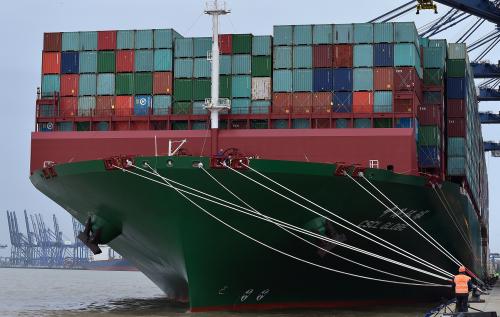
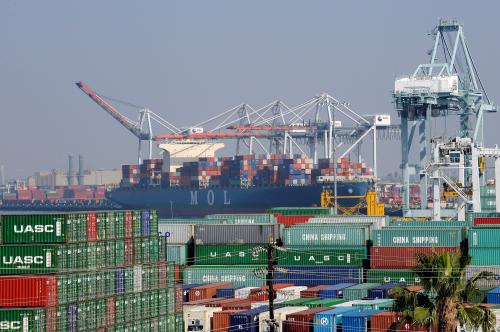
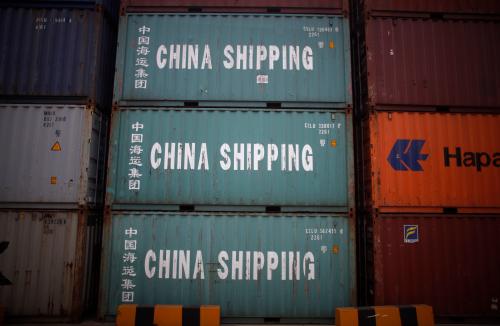


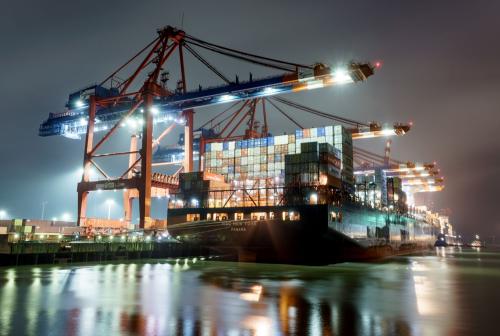
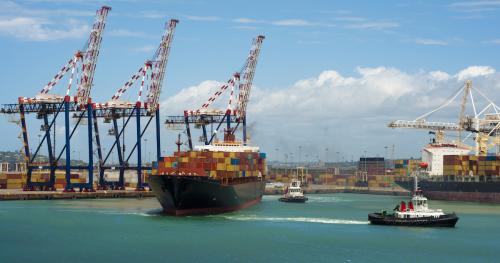

Commentary
The high costs of protectionism
February 7, 2017